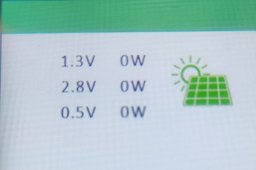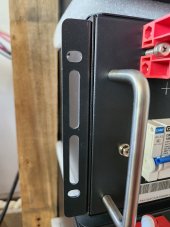I will give you credit, I didn't think such a standalone arc fault existed.
Read thru that manual, certainly has plenty of exceptions and talk about false tripping.
Because of the random nature of arc faults with different types of arcs (series, parallel, etc.),it not possible to achieve a 100 percent detection rate. Following numerous tests with various rectifiers and application scenarios, we have achieved the highest possible detection rate. Using this technology for arc fault detection significantly increases the safety and reliability of PV systems.
As it is not 100% detection rate, then it would be prudent to exercise other safety measures such as metal conduit.
Nuisance tripping tests are also required in addition to these arcing tests. The UL standard does not cover all the conditions encountered in practice to which a device will be subjected,however.
Influences on detection The task of a protection/detection device is to detect an arcing event in the mix of all frequencies in the overall system. The inverter generates a lot of noise in a PV system during its constant search for the Maximum Point of Power (MPP). The way in which inverters search for the (optimum) MPP can vary from one manufacturer to another. Besides the MPP tracking process, the inverter itself can also generate additional excessive noise during the inverter startup phase or during its self-test, during high solar irradiance at/over the inverter's maximum input, or during cloudy conditions.To accurately detect an arcing event, all these possible disturbances generated must be considered in order to prevent false tripping of a protection/detection device. Besides the noise generated by an inverter itself, the detection range (distance) between the arcing event and the detection device is significant. Arc detection works best with a high signal-to-noise ratio. The greater the distance between the device and the arcing event is,the lower the signal-to-noise ratio will be. The arc will be masked by the "background noise".The UL 1699 – Sub B standard has incorporated tests for determining whether the AFCI or AFD is functioning correctly (detection). The tests consist of detecting the arcing wattages –mentioned further above – in the proximity of the device and at a distance of 66 meters (200feet) from the device. But also tests are included to determine whether the device is subjected to false tripping (detection when there is no arcing event). The tests consist of testing the functioning of the device when installed in combination with an inverter that can create disturbances that could mask the arcing event. But also it might occur that the device does not detect the switching of an interrupting device, for example a DC disconnector.




